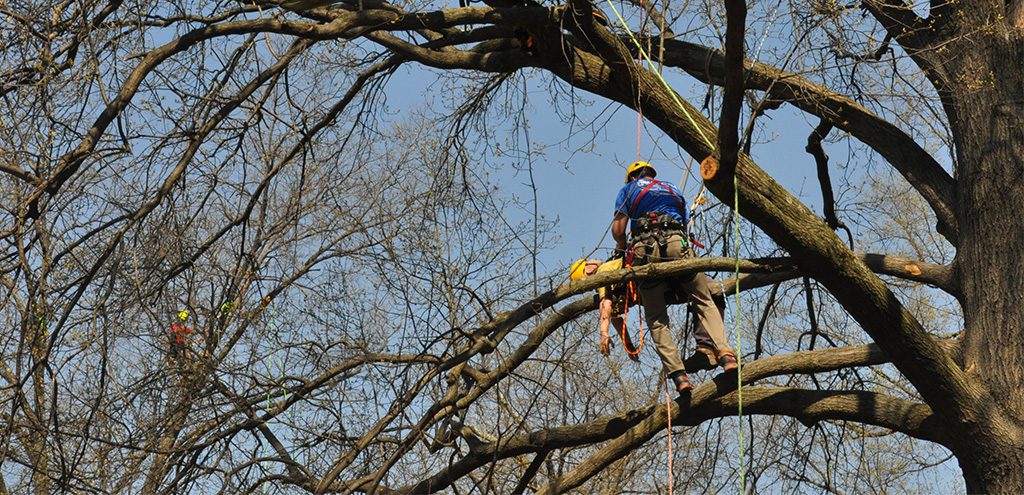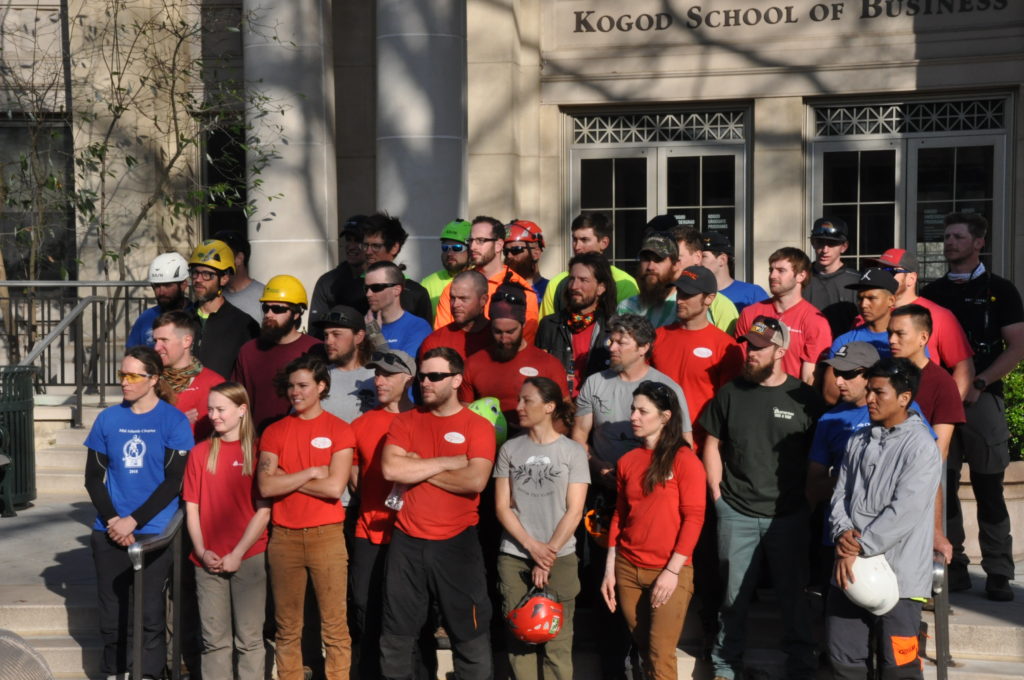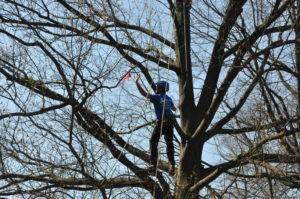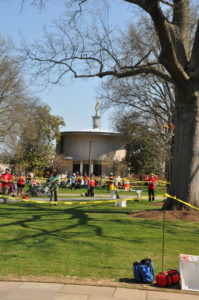
Last week we let you know that the 2018 MAC-ISA Tree Climbing Championships were happening at AU and this week we’re excited to share a recap! While this spring was exceptionally chilly, the 80 degree day on Saturday was just perfect for spectating the competition.

When the Tree Climbing Championship originally started, in 1976, it was called a Jamboree. Climber Jocelyn Lohse, the only female climber in her first competition in 2011, described it as, “a gathering of arborists who got together to hang out and network and share techniques.” Thankfully, it has still kept that vibe with arborists cheering on their coworkers and fellow competitors.
To get into the competition details – Climbers compete in five different events, each integral to the work of a profession arborist. There is a Work Climb, which tests the competitor’s ability to move about the tree using a climbing line and saddle/harness; an Aerial Rescue Event, which is a timed event that tests the competitor’s ability to climb to and safely lower a climber who is unable to descend without assistance; and a Belayed Speed Climb, which tests the competitor’s ability to climb a predetermined route from the ground to about 60 feet up a tree using a belayed climbing system for safety. There are also the Ascent event and Throwline event, where competitors aim to install climbing lines at certain points in the tree.

By far and away the most popular for climbers was the Work Climb. Jocelyn noted, “It’s just a really fun climb. The Ascent Event is just straight up and is a lot of work. For Work Climb, you start the top of the tree, ring a buzzer when you’re ready to start and work your way through tree while you hit different stations. I wouldn’t call it a slower pace, but it’s more playful.”
The two speed climbing events, Belayed Speed Climb and the Ascent event, were thrilling to watch – the winning time was only 14 seconds. I had to wonder: what goes through your head as you compete? Competitor Drew Dunavant, an arborist with Truetimber, described it as “a feeling unlike any other time. You’re so hyper aware and focused on every branch and twig and thing you’re doing with your hands.”

However, this isn’t the only recent competition D.C. has hosted. This past summer the National Arboretum hosted the International Tree Climbing Championships. But is there a big difference in the field and feeling of an international and regional competition? I was surprised by Jocelyn’s response when she said, “There isn’t a major difference. The Mid Atlantic chapter is exceptionally well run and well organized so it is more on par with international competitions, thanks to the incredible effort of the volunteers that dedicate time to execute this.” Drew added, “This chapter is extremely talented so it takes a lot to win. In every competition you have to do your best and move forward, but in the international competition it’s higher stakes. You’re thinking, ‘I don’t want to make a fool of myself in front of people from New Zealand or Germany and I don’t want shame my chapter!” Sounds we have a lot to be proud of as members of the Mid-Atlantic Chapter.

Ultimately, Steve Castrogiovanni, Head Judge, wants spectators and folks new to the field to walk away with “a healthy respect for what proper arboriculture is. There is a huge difference between a professional arborist and a guy who cuts trees.”

So what’s next? Most climbers mentioned their excitement surrounding the leaps in technology. “It feels like the iPhone or computers – that’s how fast this tech is changing and adapting,” Steve noted, while Jocelyn added, “as new techniques and technologies are developed in the field the competition has moved along so it’s neat seeing the progress but as for the future I have no idea what people will come up with next. It’s a bit thrilling that way.”

